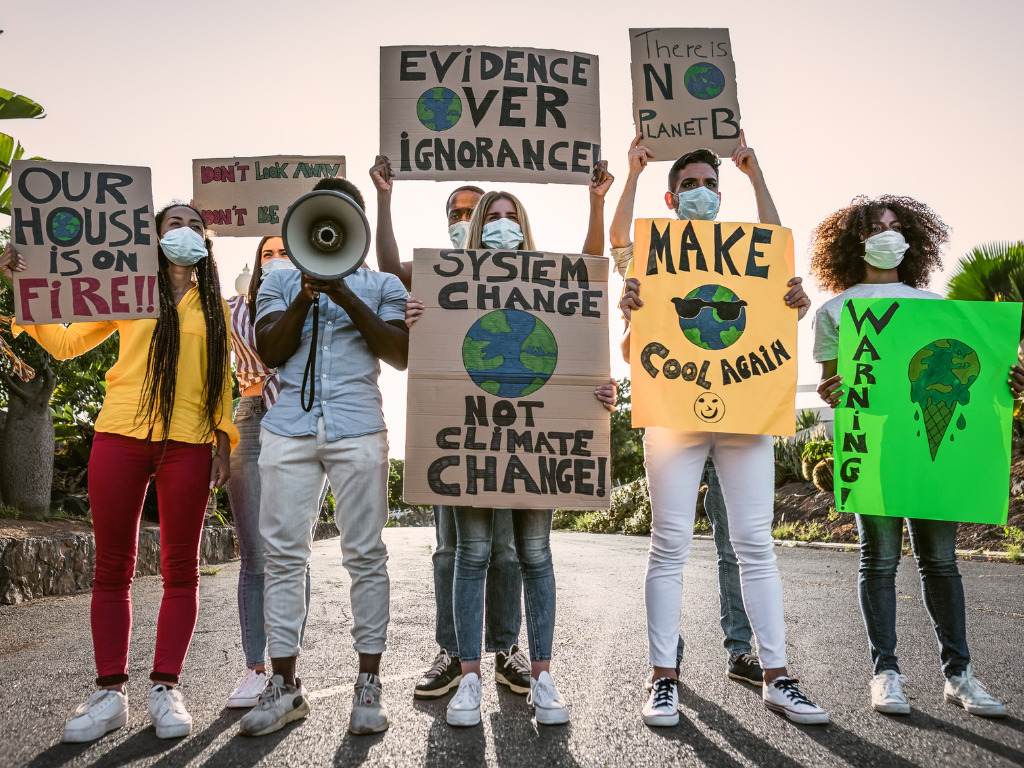4 Mins Read
I was a youth delegate at COP27 in Sharm El Sheikh. It was a once-in-a-lifetime experience. I saw history being made in many ways. Below I share my takeaways.
COP27 is an important milestone in the climate race but is also a work in progress that still has a great deal of room for improvement. It is undeniable that ground-breaking decisions were made during the conference on climate justice, but no development was made on phasing-out fossil fuels.
The Establishment of A Loss and Damage Fund
Loss and Damage, the economic and non-economic impact of climate disasters, has been a sensitive topic in the past decades. Most governmental institutions from developed regions are reluctant to contribute to loss and damage finance since it could imply the liability of historical emissions. This year, vulnerable countries, led by Pakistan which experienced one of the worst floods in history earlier this year but has a greenhouse gas emission of less than 1% of global emissions, aggressively fought for the fund. This was the first time that Loss and Damage was included in the COP agenda, which definitely proves that international institutions are aware of the importance of climate justice, and protecting the rights of the most at-risk populations.
“A fund for loss and damage is essential—but it’s not an answer if the climate crisis washes a small island state off the map—or turns an entire African country to desert,” mentioned in U.N. Secretary-General António Guterres’s tweet. Mitigation and adaptation efforts should come together while solving the intensifying climate crisis in developing countries. The Loss and Damage fund is a breakthrough, but we are still waiting for transparency on the use of climate finance as well as allocation criteria.
Fossil Fuels and A Just Transition
“A clear commitment to phase-out all fossil fuels? Not in this text,” said Alok Sharma, President of COP26. There were over 600 fossil fuel lobbyists at COP this year, with a greater influence than any frontline communities. These delegates, together with producing states baulked, and we do not see much progress made on fossil fuels after the “phase-down” agreement in COP26. The situation is worrying, especially when global emissions from fossil fuels will reach another record high in 2022, not to mention the emission level would need to halve within 11 years to reach the 1.5 degree Celsius Paris temperature target.
The good news is both private and public sectors have started putting just transition in place, the fair and equitable transformation when moving towards a low-carbon economy. Everyone has been discussing the renewable energy transition. But what about the people who depend their lives on fossil fuel-intensive industries? They should be granted the opportunity to receive retraining opportunities, and this is not limited to only the energy field, but also many other ones that might be affected by sustainability transitions. It is delighted to see that the first-ever Just Transition Pavilion was launched in COP27, and the Just Energy Transition Partnership (JETP) with Indonesia was announced during G20 to support the shift from coal to renewables. Yet, UAE, a major oil-producing nation, will be hosting COP28 next year. I hope they can take a more balanced approach without allowing fossil fuel lobbyists to wield too much influence.
A Louder Youth Voice
The role of youths in international climate change conferences is finally getting more attention, with young people becoming official stakeholders in climate policy under the Action for Climate Empowerment action plan. It was impressive how hundreds of youngsters came together at the first Children and Youth Pavilion at COP, exchanging ideas and sharing experiences on local climate issues. As part of the official youth constituency of UNFCCC (YOUNGO), I got the opportunity to join a bilateral meeting with Alok Sharma, the President of COP26 during the second week of COP27 to deliver the demand of our generation through discussing the Global Youth Statement drafted by YOUNGO members. It was a rewarding experience to share our thoughts as global youths with high-level climate leaders. While I appreciate how the younger generations are able to make use of COP27 to make their voices heard by international leaders, I hope this is not only a “youth-washing” act. The new generation is disproportionately affected by climate change, and they deserve to be heard. I look forward to seeing the innovative mindsets and passion of young people to drive future climate action, in addition to how youths’ demands can be included in future COP agreements.
What’s next?
There are a lot of “first-ever” moments during this COP, and what’s next? The discussion on how to curb climate change will have to go on. While we are reassured to see governments recommit to keeping 1.5 alive instead of backsliding on climate agreements, it is important to note that global emission is anticipated to peak by 2025. This COP did make some progress, especially on the loss and damage fund. But guess we will have to wait till next year to see more implementation details.
Lead image courtesy of Canva.



